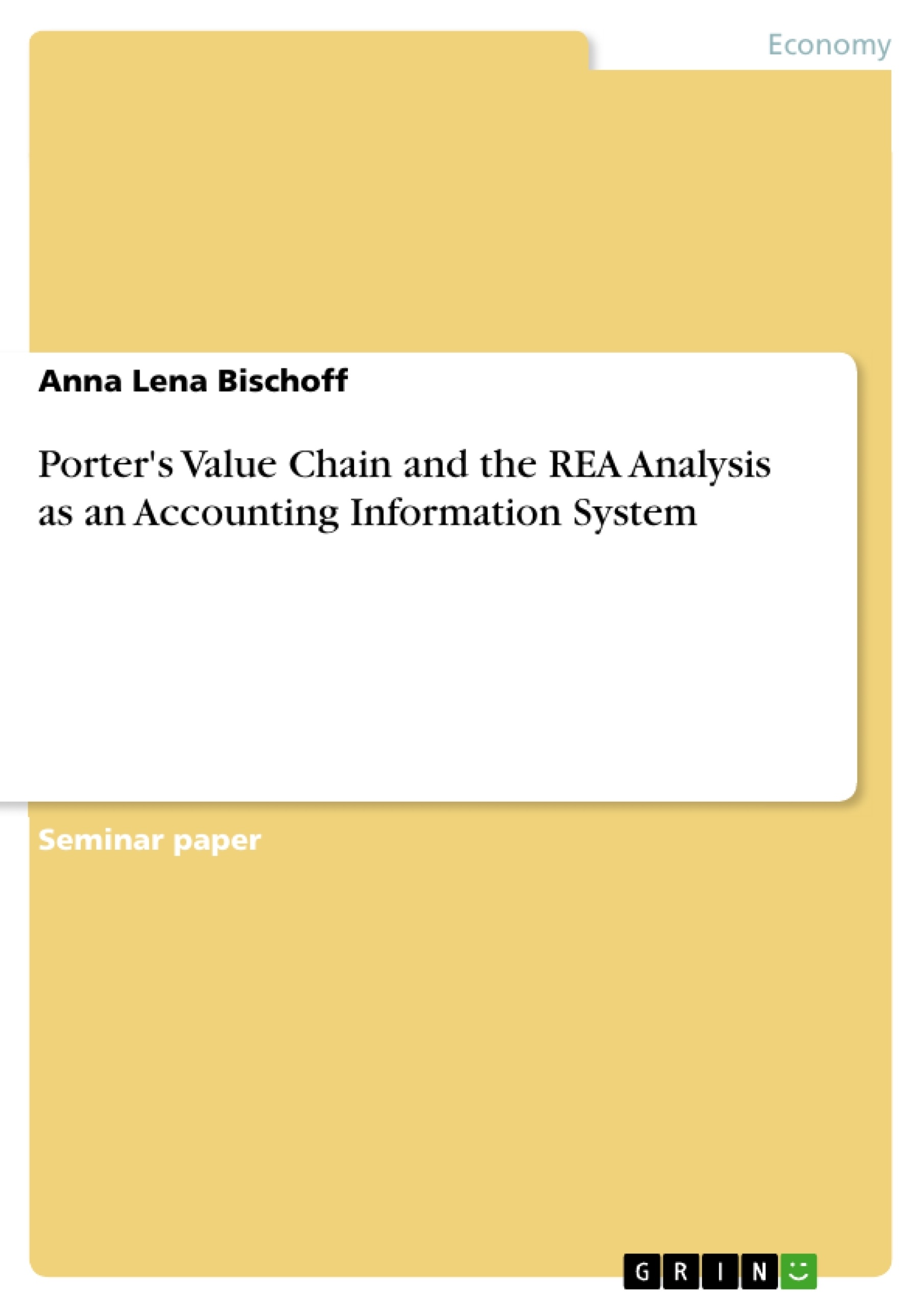Rachel Branckowitz and Rick Young are two dentists who are merging their offices together. They are faced with finding an Accounting Information System that fulfils their requirements e.g. the extended number of clients. The merging and system implementation is due in six month.
Therefore Porter's Value Chain will be derived as a solution after having explained the Value Chain concept. From there on a REA Analysis will be developed, which will be explained in detail.
The Case used in this paper "Designing and Implementing an Information System for the Dental Office of Branckowitz & Young" by Alex Nikitkov and Barbara Sainty can be found in "ACCOUNTING PERSPECTIVES Instructional Cases Teaching Notes and Supplementary Materials" Volume 7, Issue 4.
Table of Contents
1. Introduction
2. Value System Model
2.1. Theory of Porter’s Value Chain Model
2.2. Porter’s Value Chain applied on Branckowitz & Young
3. Business processes
3.1. Theory of Transaction Cycles
3.2. Transaction Cycles applied on Branckowitz & Young
3.2.1. The Revenue Cycle at Branckowitz & Young
3.2.2. The Expenditure Cycle at Branckowitz & Young
3.2.3. The Production/Service Cycle at Branckowitz & Young
3.2.4. The Payroll Cycle at Branckowitz & Young
4. The REA Analysis
4.1. Theory of the REA Analysis
4.2. The REA Analysis at Branckowitz & Young
4.3. Key Attributes
4.3.1. Key Attributes for the Revenue Cycle
4.3.2. Key Attributes for the Expenditure Cycle
4.3.3. Key Attributes for the Production/Service Cycle
5. References
5.1. Books
6. List of figures
7. Appendix
7.1. Explanation of terms used



